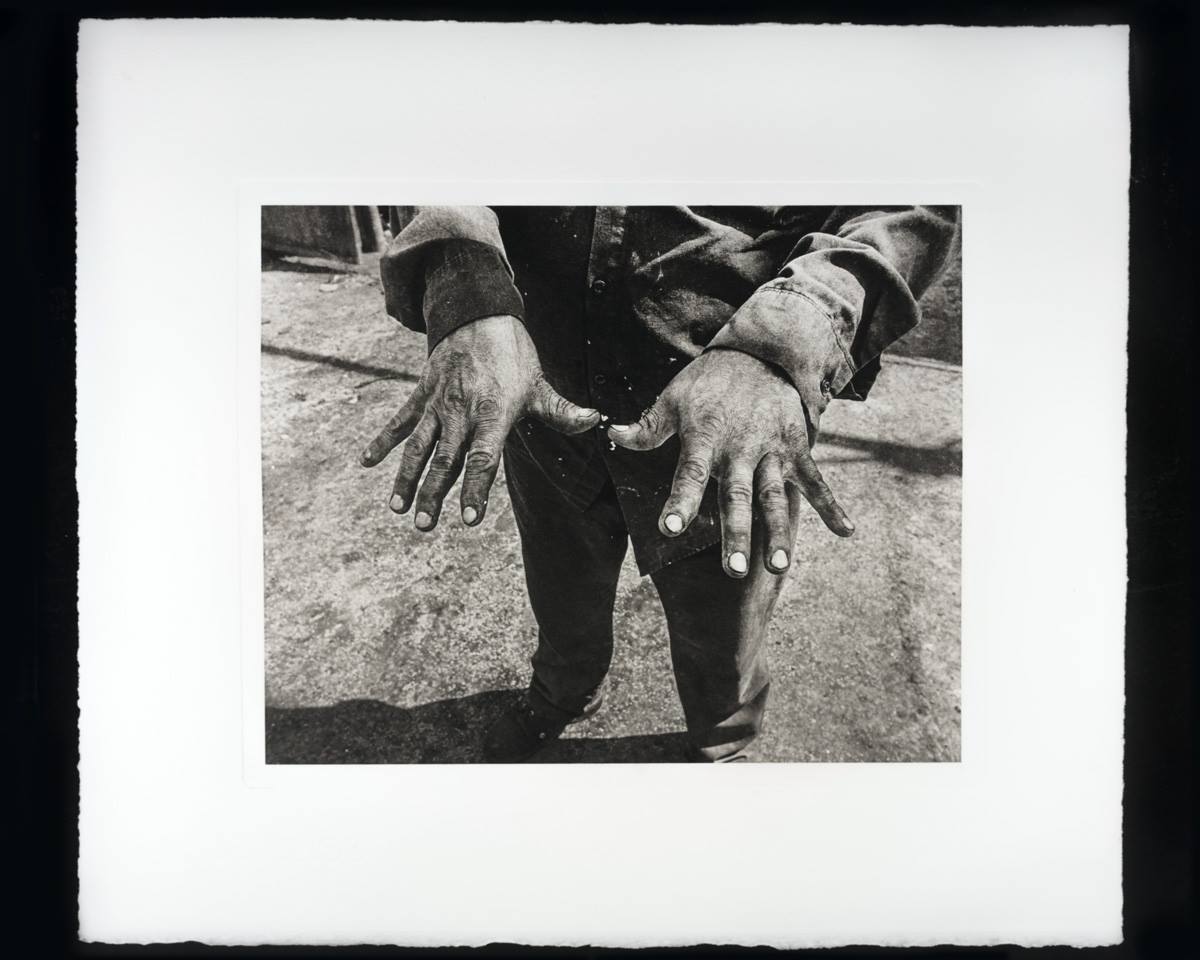Various tests with Japanese paper and the photogravure process with samples and tips.
Read MoreAlternative Process
Printing of "Choking" From "The Iron Triangle" series /
Here is a video of me printing “Choking”
Photopolymer Gravure /
I originally went to school for art and have a degree in Illustration. In the last year of school, I realized that photography was really what I loved to do. I learned in the darkroom with large format film, but with the advent of digital photography, I was missing the handmade touch I was used to with the darkroom and with painting. The smell of oil paint and turpentine, the feel of real paper, the magic of seeing an image appear magically in front of you. To get back to that feeling, I have been learning many different alternative photographic processes over six years to find the process that gave me that hands on approach to printing that also matched my vision. I have done Platinum/Palladium, Color Gum Bichromate, Carbon Transfer and most recently Photopolymer Gravure. Most people are familiar with Platinum prints and maybe even Carbon, but even photographers who practice many of these processes have not heard of photogravure.
So, what is Photogravure?
Photogravure is one of the oldest photographic printing processes and is one of what is called the big three, Platinum, Carbon and Photogravure. These three processes are considered the most stable and most archival processes available. The way a photogravure is made is by taking a positive image and contact printing it onto a piece of carbon tissue, usually red ochre in color, that has been sensitized with a dichromate. The carbon tissue is then mated to a piece of copper and etched in an acid bath. The resulting piece of copper is then inked like a traditional etched plate (think Rembrandt or Goya) and then run through an etching press on to a piece of paper. This process is long, expensive, chemically hazardous and very difficult. There are still a few artists around who still do traditional photogravure onto copper plate, but with the banning of the use of dichromates in Europe and other countries, who knows how long artist will be able to continue this way.
Here are some famous photographers who practiced Photogravure:
Alfred Stieglitz - The Flat Iron
Edward S Curtis - Bear’s Belly, Arikara Indian half-length portrait facing front wearing bearskin
Edward Steichen - Rodin
Paul Strand - Blind Woman, New York
Now that I have explained Photogravure, what is Photopolymer Gravure? For a while now, artist who produce etchings have been looking for a less toxic way of making plates that don’t required acids or dichromates. Some of these are thin polymer films that can be put onto plastic or different types of metals. There are also readymade plates coated with polymer films. Toyobo KM73 plates and the Jet LSL-73-SP are two of the most popular ones for photogravure. The main advantage to the photopolymer process is that you only need room temperature water to process them instead of Ferric Chloride. This doesn’t mean they are entirely non-toxic, but with a pair of latex gloves you can mitigate any toxicity from them. These plates are then inked and run through an etching press the same way as traditional copperplate photogravures are. The results have even better tonality than traditional Photogravure. I spent a year trying to learn myself and decided that I needed help so I took a workshop with Mark Nelson, the creator of Precision Digital Negatives. It was truly helpful in learning all the small things that make a big difference. To not obsess to much about charts and learn by making real images.
I have been working on “The Iron Triangle” Series for around 5 years now and was looking for a process that matched the spirit of the place I was photographing. I tried platinum and carbon, but in the end, after making my first photopolymer gravure, I knew this was the right process. The grit of the images finally matched the depth of the ink on paper. The range of tones and the way it renders textural details was breath taking. Don’t get me wrong, I love Platinum, but that process seems better for trees in fog type landscapes or images with subtle tonal gradations. Carbon is also wonderful, but in the end Photogravure really shines for me. The ability to use different inks like mixing paint and any type or color paper is liberating and gives me back the creative control I was missing with other processes.
I am currently working on a portfolio of “The Iron Triangle” printed completely as Photogravures. That’s 60 images overall and I have been waking up every day at 4am to create them. Once they are done I will be creating more images for sale from my travels through Spain and Italy so be on the lookout for those soon.
Here are a few images that I have printed and photographed so far:
Paper: Somerset Satin White Ink: Graphic Chemical Bone Black Plate: KM73 Size: 8x10 image 13x15 paper
© Greg Brophy 2018
Detail of Royal Field
Paper: Somerset Satin White Ink: Graphic Chemical Bone Black
Plate: KM73 Size: 8x10 image 13x15 paper
Detail
Paper: Somerset Satin White Ink: Graphic Chemical Bone Black
Plate: KM73 Size: 8x10 image 13x15 paper
Detail
Paper: Somerset Satin White Ink: Graphic Chemical Bone Black
Plate: KM73 Size: 8x10 image 13x15 paper
Detail
Paper: Somerset Satin White Ink: Graphic Chemical Bone Black
Plate: KM73 Size: 8x10 image 13x15 paper
Detail














